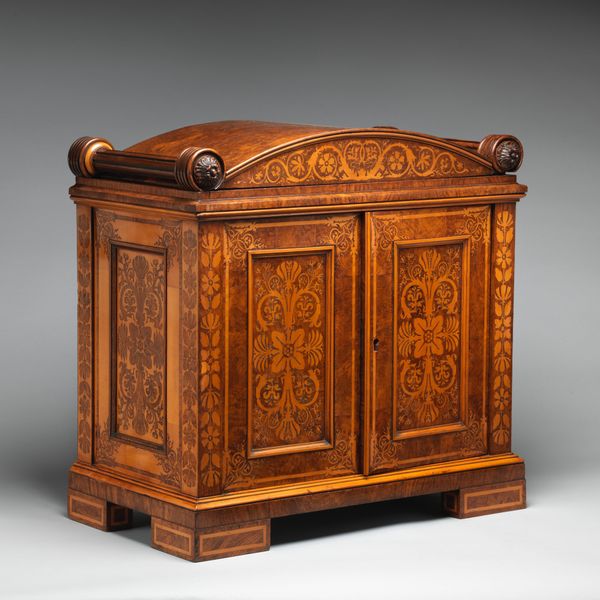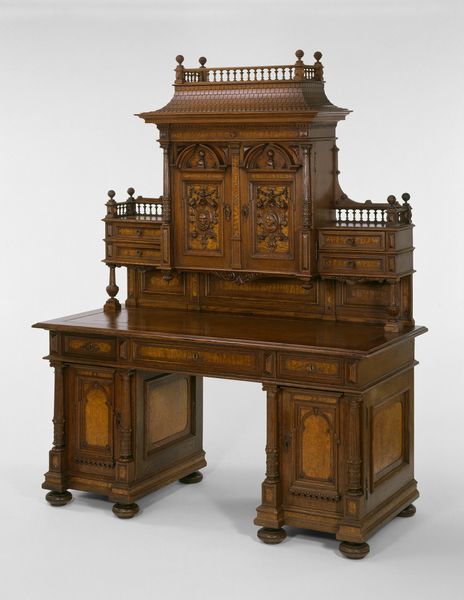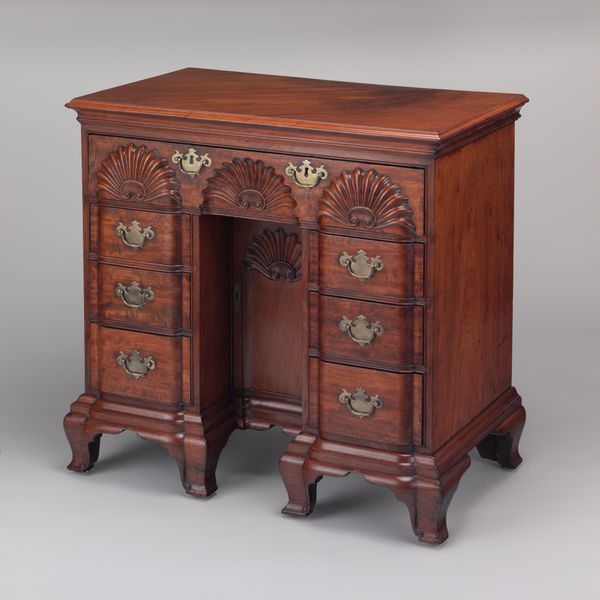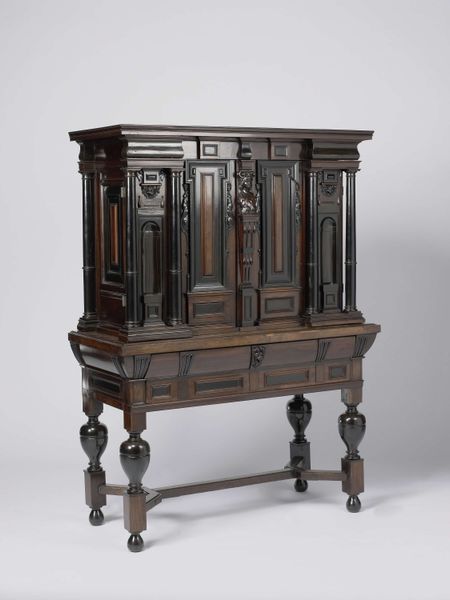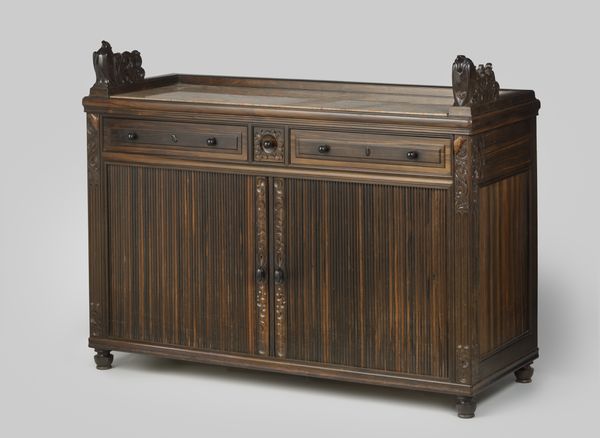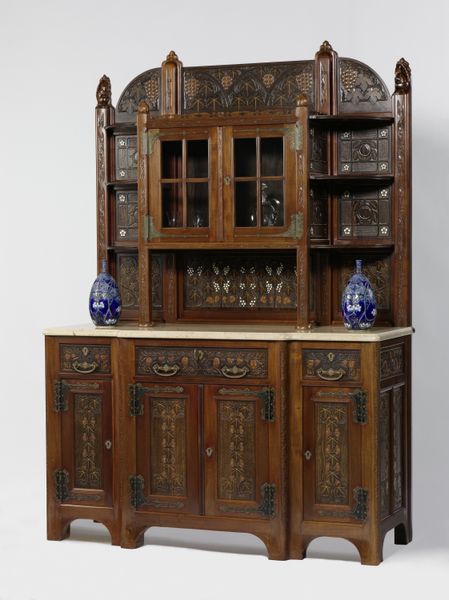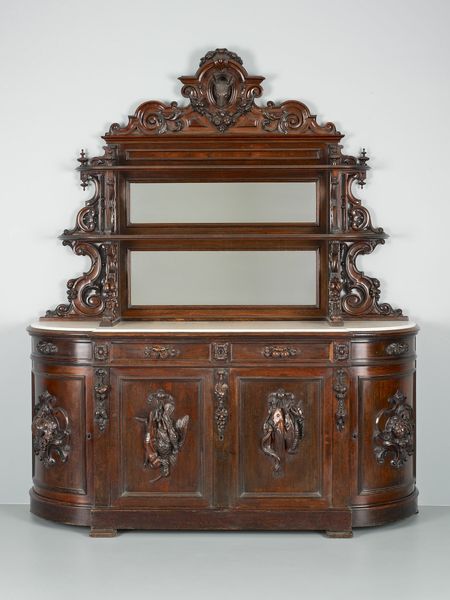
Dimensions: 230 × 213.4 × 73.7 cm (91 1/2 × 84 × 29 in.)
Copyright: Public Domain
Curator: Editor: This is the Sideboard, created by the Herter Brothers between 1876 and 1880. It's currently located here at the Art Institute of Chicago. What stands out to me is the intense amount of labor involved in its construction with all of the carving and gilding on the wood! What's your take on it? Curator: It’s a fascinating example of the Arts and Crafts movement. We see an emphasis on handcraftsmanship, which was a direct response to industrialization. Notice how the materials themselves - the specific type of wood, the way it’s carved - communicate status. Can you imagine the skill involved? It reflects an idealization of pre-industrial labor. Editor: Absolutely, it’s almost a celebration of labor and material. But, what about the consumption side of it? Was this a piece meant for display? Curator: Precisely. Think about the social context: the wealthy elite commissioning these pieces. They were displaying their own wealth through the material richness, and, indirectly, the intensive human labor. The very existence of the object reinforces that hierarchy. Editor: So the Sideboard is a kind of physical manifestation of economic and social power through materials and the process of making? Curator: Yes. It is also challenging what is considered "high art" through valuing furniture so richly. This piece shows us so much about the economy of the time, it's almost anthropological. Editor: This discussion has shifted my perception entirely, from initially seeing just a beautiful object to understanding it as a marker of class and labor relations! Curator: Agreed, analyzing its materials, techniques, and social functions opens up new interpretations!
Comments
No comments
Be the first to comment and join the conversation on the ultimate creative platform.

